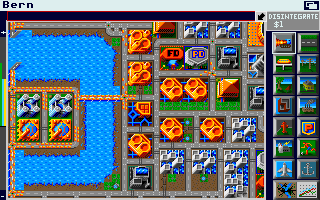 DOOM is a PC game titlat that wasn’t initially released in stores. It was uploaded to an FTP server in the University of Wisconsin-Madison and on the Software Creations BBS on the 10th of December; released as a shareware game, people were encouraged to download and spread the game around to all their friends.
DOOM is a PC game titlat that wasn’t initially released in stores. It was uploaded to an FTP server in the University of Wisconsin-Madison and on the Software Creations BBS on the 10th of December; released as a shareware game, people were encouraged to download and spread the game around to all their friends.
In days before social networks and the wildfire of the Internet (or high speed networking) this game still managed to spread around to everyone in the gaming community. From1993 to 1995 the title had an estimated install base of 10 million computers. We were one of them.
Granted, ten million copies were installed but most were not registered and simply remained as shareware. However, over one million copies were sold for the registered version of DOOM and this brought momentum to their next non-shareware copy of the DOOM series. The Ultimate Doom (version 1.9, including episode IV) was released, making this the first time that Doom was sold commercially in stores.
In a press release dated January 1, 1993, id Software had written that they expected Doom to be “the number one cause of decreased productivity in businesses around the world”. This prediction came true at least in part: Doom became a major problem at workplaces, both occupying the time of employees and clogging computer networks with traffic caused by deathmatches. Intel, Lotus Development and Carnegie Mellon University are among many organizations reported to form policies specifically disallowing Doom-playing during work hours. At the Microsoft campus, Doom was by one account equal to a “religious phenomenon”. (wikipedia)
The history to DOOM is very deep, involved and most people know of some of the basics. It’s an early First-Person-Shooter (FPS) game where you experience the world in the eyes of the character. The objective of each level is “simply to locate the exit room that leads to the next area” (usually labeled with an inviting red EXIT sign or a special kind of door), while surviving all hazards on the way. You’ll find monsters, pits of radioactive slime, ceilings that come down and crush the player, and locked doors for which a keycard, Skeleton key, or remote switch need to be located. The levels are sometimes labyrinthine (the automap is a crucial aid in navigating them), and feature plenty of hidden secret areas that hold power-ups as a reward for players who explore.
Development started for DOOM by John Carmack in 1992 while the rest of the team was finishing Wolfenstein 3D’s sequel Spear of Destiny. The game was a hit, inspired companies to start working on competitive FPS titles and pretty much created the landscape in US gaming that we have today. Although Japan and other regions may not be as crazy about FPS titles as we are, there is no doubt DOOM impacted the world in terms of raising the bar in graphics, 3D design and level creation… oh, and graphic violence.
Although DOOM‘s name dropped from the charts when Duke Nukem 3D and Quake arrived it is still regarded as the “Elvis of Gaming” or the “Beatles of the Game Industry” – the number one video game of all time.
To hear all of our thoughts, checkout TD Gaming Podcast Episode 48.
Podcast: Play in new window | Download

 Microsoft Xbox 360 Outsells PS3 and Wii
Microsoft Xbox 360 Outsells PS3 and Wii 